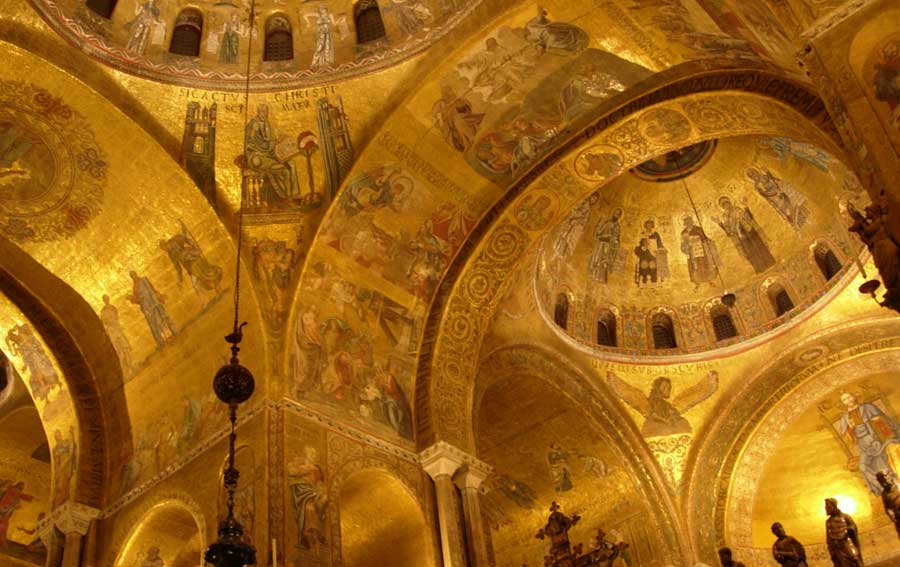Now imagine living your day to day in a grey and brown world, where your
clothes, your furniture, your everyday objects, and your working environment
were mostly either one colour or the other. Life would often seem dull because of
it, but this is how most regular people would have viewed the world back in the
14th century, opaque and monochrome. Colour, so explosive and rich today, cost
money; it was a luxury many would have paid for, and many did pay for.
So imagine if you could break away from the daily dullness of greys and browns,
and feast your eyes for free on shimmering gold; all you had to do was come to
the Basilica to see these same mosaics, where the trembling reflection of
candelight across the carpets of gold could easily match a parallel emotional
throbbing in the observer’s chest. The gold covering the vaults and walls would
be almost overwhelming, a perfect contrast to all the other colours that depict
the holy figures. What this could mean for the beholders is hard to say from
our point of view, but it is easy to imagine that people would have begun to feel
new emotions, opening themselves up to unexpected thoughts, sentiments and
even ecstasy before this original and wonderful spectacle.
Part of the intent behind its construction, many obseveres would be brought closer to God. As
much as the richness was a sign of the worldly wealth of the State, it also ensured
that the crowds of faithful citizens saw it as a sign of something spiritually
meaningful. Moreover, a great percentage of the population would have been
illiterate and unable to read the Bible, but could be instructed through images.
The mosaics in the Basilica depicted the most important scenes from the Old and
New Testaments, so that everyone could have an idea of what the Good Book was
all really about.






